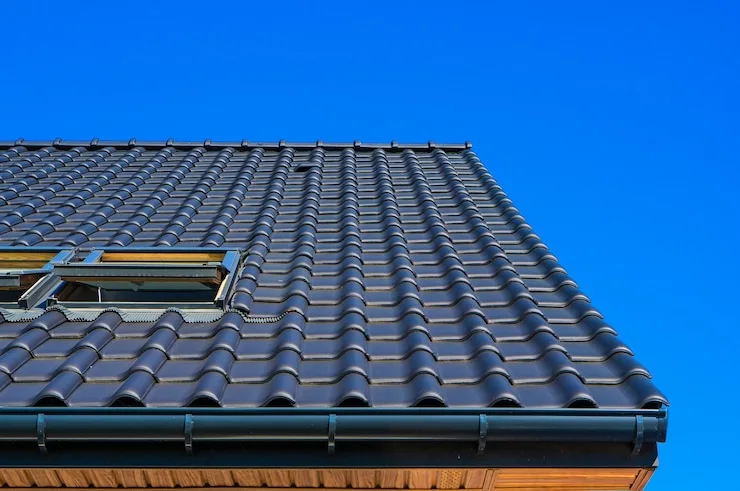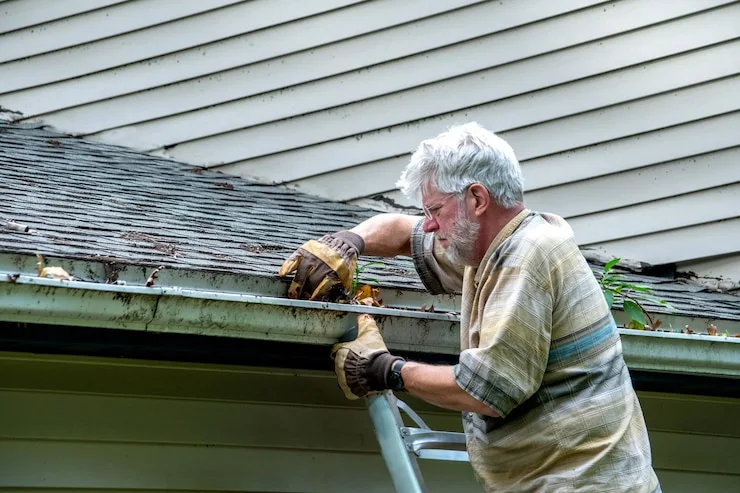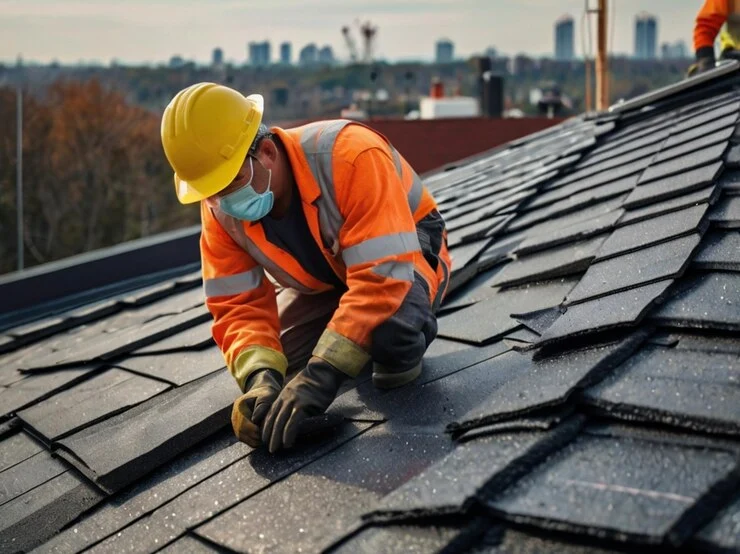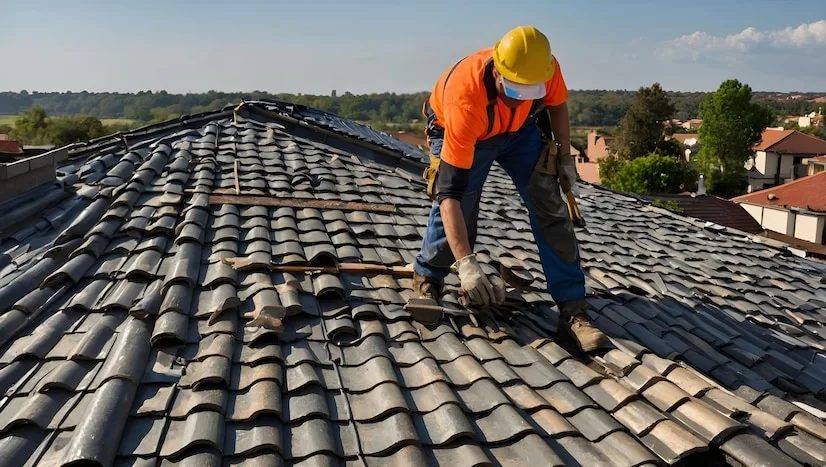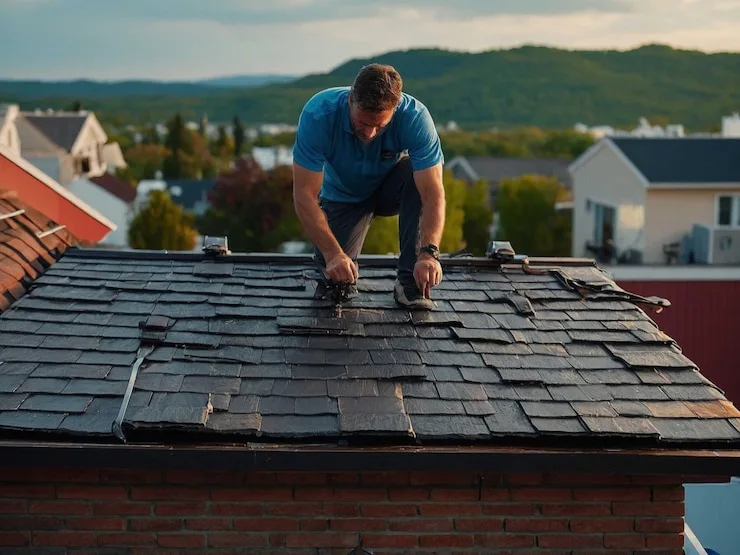Roofing and Flashing | Essential Components for a Durable Roof
Roofing and flashing are key components that work together to protect your home from the elements and ensure a long-lasting, durable roofing system. At Falcon Roofing, we recognize that a roof is more than just a structure above your head; it’s a crucial system designed to safeguard your home. Roof flashing plays a vital role in this system, helping to prevent water damage and extend the life of your roof. In this blog, we’ll cover everything you need to know about roofing and flashing, including the different types, materials, and how to choose the best options for your project.
What is Roof Flashing?
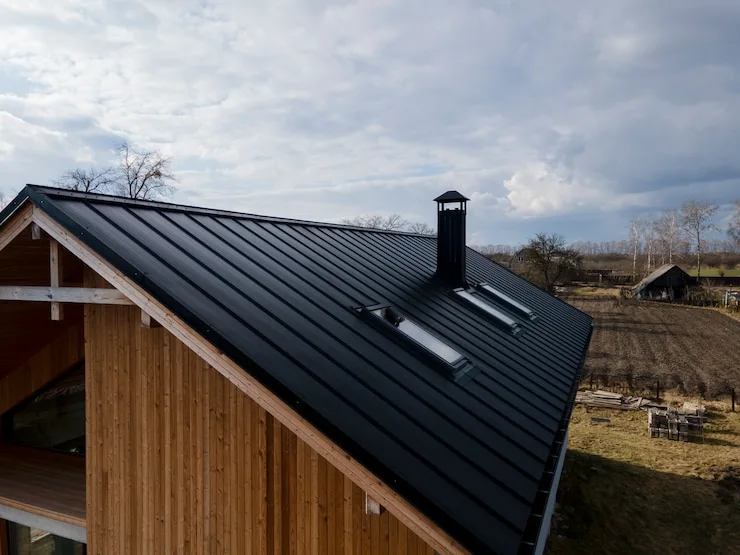
Roof flashing refers to thin pieces of impervious material installed to prevent water from seeping into joints, cracks, and other vulnerable areas of a roofing system. It is primarily used where different sections of the roof meet, such as around chimneys, vents, skylights, and along the edges of the roof. Flashing acts as a waterproofing roof measure that directs water away from potential entry points, providing extra protection to your roofing system.
Flashing is essential in roof leak prevention, especially in places prone to water penetration. Proper roof flashing installation ensures the long-term performance of your roof by preventing moisture damage and structural issues, making it a critical aspect of roof maintenance.
Roofing and Flashing Types
Not all flashing materials and types are the same. Each serves a unique function depending on the area of the roof it is installed. Below are the common types of roof flashing used in roofing systems:
1. Step Flashing
Step flashing is primarily used where the roof meets a vertical surface, such as walls or chimneys. It consists of overlapping pieces of flashing that “step” up the roof, ensuring water is directed away from the intersection. Step flashing is particularly common around chimneys and dormers.
2. Valley Flashing
Valley flashing is installed in roof valleys, which are the internal angles where two roof slopes meet. Since valleys channel large amounts of water, this flashing must be robust and made from durable materials to prevent leaks.
3. Vent Pipe Flashing
Also known as boot flashing, vent pipe flashing is used to seal around protrusions such as pipes or exhaust vents. It usually has a rubber or metal collar that fits snugly around the pipe, preventing water from seeping into the roof.
4. Drip Edge Flashing
Drip edge flashing is installed along the edges of the roof, usually at the eaves and rakes. Its primary role is to direct water away from the fascia and prevent water from running underneath the shingles.
5. Chimney Flashing
Chimneys are a common point of entry for water leaks. Chimney flashing typically consists of both step flashing and counter-flashing. Step flashing directs water down and away from the chimney, while counter-flashing covers the step flashing to add another layer of protection.
6. Continuous Flashing
Continuous flashing, also known as apron flashing, is a long piece of flashing that protects the joint between a sloping roof and a vertical wall. It helps water flow down the roof without penetrating the wall junction.
Choosing the Right Materials for Roofing and Flashing
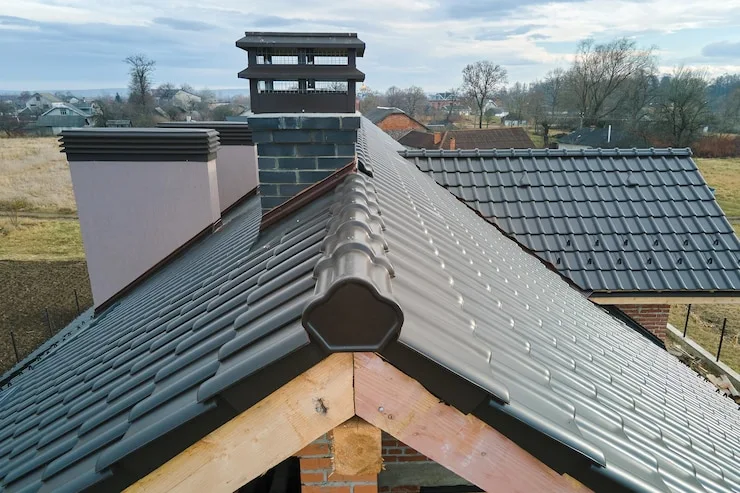
When it comes to roofing and flashing, choosing the right materials is critical for ensuring longevity and protection. Each material has its advantages and is suited for different conditions. Below are some of the common flashing materials and their benefits.
1. Aluminum
Aluminum is a popular choice for roof flashing due to its light weight and resistance to corrosion. It is easy to shape, making it ideal for complex areas like chimneys and skylights. However, aluminum should be coated or anodized to prevent oxidation over time.
2. Copper
Copper is one of the most durable flashing materials available, offering excellent resistance to corrosion and a long lifespan. Copper flashing is often used in high-end roofing systems and is highly effective in areas like valleys and chimneys. While copper flashing is more expensive, its durability makes it worth the investment for many homeowners.
3. Galvanized Steel
Galvanized steel is another common material for roof flashing. It is coated with zinc to protect against rust and corrosion. Steel flashing is strong and suitable for areas that need extra durability, such as valleys and drip edges. However, it requires regular roof maintenance to ensure the coating remains intact.
4. Lead
Lead flashing is highly malleable and often used in areas where the roof has complicated angles or intersections. Lead flashing is long-lasting and resistant to extreme weather conditions. However, due to environmental concerns, its use has diminished in recent years.
5. Rubber or Plastic
Some modern flashing materials are made from rubber or plastic compounds. These materials are cost-effective, flexible, and durable. They are typically used for vent pipe flashing or skylights.
Roofing Systems and Flashing Installation
A well-installed roofing system combines high-quality shingles or other roof coverings with expertly placed flashing to create a comprehensive layer of protection. Flashing is particularly vital in areas where leaks are most likely to occur, such as roof valleys, chimneys, and around vents.
Proper roof flashing installation involves precise measurements, cutting, and sealing. This ensures a perfect fit and prevents water from penetrating the roofing system. Poorly installed flashing is one of the main causes of roof leaks and premature roof failure.
Roof Flashing Repair and Roof Maintenance
Flashing is generally durable, but like any part of your roofing system, it may need repair or replacement over time. Regular roof maintenance, including inspecting the flashing for signs of wear and tear, is essential in preventing costly repairs. Common issues that require roof flashing repair include rust, cracks, and loose flashing due to shifting or high winds.
At Falcon Roofing, we recommend inspecting your roof flashing at least twice a year, especially after severe weather. Timely roof flashing repair can prevent minor issues from becoming significant problems.
Roofing Protection and the Importance of Flashing
Flashing is a critical component of roofing protection. Without it, even the best roofing materials can fail due to water penetration. Flashing acts as a sealant for your roof’s most vulnerable areas, ensuring long-term durability and structural integrity.
In addition to roof leak prevention, flashing plays a key role in maintaining the overall health of your roofing system. It prevents water from entering your home, which can lead to mold growth, rot, and other moisture-related issues. Installing high-quality flashing and scheduling regular maintenance will help extend the life of your roof and save you money on future repairs.
Conclusion
Roofing and flashing work hand-in-hand to create a robust barrier against the elements, protecting your home from water damage and other environmental factors. Whether you are installing a new roof or maintaining an existing one, understanding the different types of flashing and choosing the right materials is key to ensuring the longevity of your roofing system.
At Falcon Roofing, we are committed to providing our customers with top-quality roofing services, including expert roof flashing installation and repair. Whether you’re dealing with a roof leak, need roof flashing repair, or are planning a new roofing project, our experienced team is here to help. Contact us today to learn more about how we can help protect your home with the best roofing and flashing solutions available.
FAQs
What is roof flashing, and why is it important?
Roof flashing is a thin material, typically metal, installed at joints, edges, or other vulnerable areas of a roof to prevent water from entering your home. Flashing is especially crucial around chimneys, valleys, vents, and skylights, where different parts of the roof meet. Proper roof flashing installation is essential for preventing leaks and maintaining the integrity of the roofing system.
How often should I inspect my roof flashing?
We recommend inspecting your roof flashing at least twice a year—once in the spring and once in the fall. It’s also a good idea to check after severe weather, such as heavy rain or windstorms. Regular inspections are a key part of roof maintenance, helping you catch potential problems early before they turn into costly repairs.
Can I install roof flashing myself?
While it may be tempting to attempt roof flashing installation or repair on your own, it’s usually best to leave this job to professionals. Proper installation requires precise measurements, cutting, and sealing to ensure a watertight fit. Poorly installed flashing can lead to leaks, structural damage, and the need for costly repairs down the line. Falcon Roofing’s team of experts can handle your roof flashing installation with precision and care.
What is chimney flashing, and why is it important?
Chimney flashing is a type of roof flashing specifically designed to protect the area where the chimney meets the roof. This area is particularly vulnerable to leaks because of the gap between the chimney and the roofline. Properly installed chimney flashing directs water away from this joint, preventing leaks and protecting your home from water damage.
What’s the difference between roof flashing and a drip edge?
Roof flashing refers to any thin material used to waterproof areas where two surfaces of the roof meet. A drip edge, on the other hand, is a specific type of flashing installed along the edges of the roof, typically at the eaves and rakes. The primary function of a drip edge is to direct water away from the fascia and roofing underlayment, preventing water from seeping under the shingles.
Can damaged flashing cause roof leaks?
Yes, damaged or improperly installed flashing is one of the most common causes of roof leaks. When flashing becomes cracked, corroded, or loose, it can no longer effectively prevent water from entering vulnerable areas of the roof. This can lead to leaks inside your home, causing damage to ceilings, walls, and insulation.
How long does roof flashing last?
The lifespan of roof flashing depends on the material used and the environmental conditions it’s exposed to. High-quality materials like copper and galvanized steel can last up to 50 years or more, while aluminum and rubber flashing typically have a shorter lifespan. Regular roof maintenance and timely repairs will help extend the life of your flashing.

